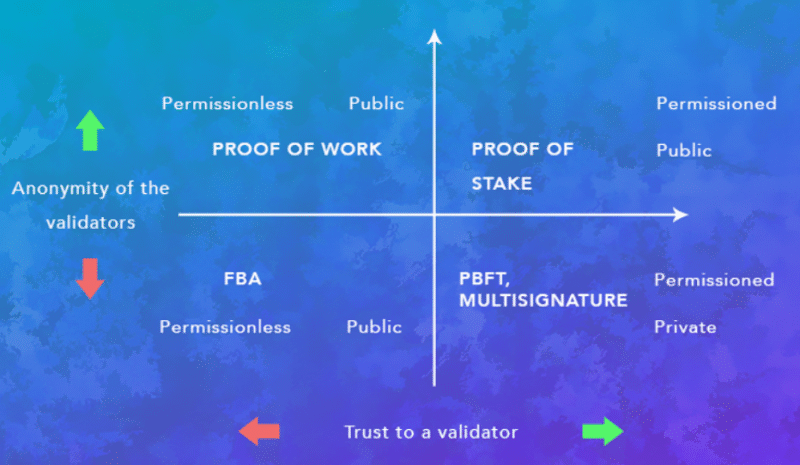Blockchain is probably the most remarkable innovation of the modern digital world. It remains one of the most promising technologies with the potential to transform and improve the global economy. Many businesses are keen to adopt Blockchain technology to increase the efficiency of their existing or new processes and build revolutionary smart mobile apps for them. This article gives you a step-by-step guide on how to build a customized and scalable smart mobile app on Blockchain.
What is Blockchain Technology?
According to Don and Alex Tapscott, authors of Blockchain Revolution (2016), it can be viewed as an incorruptible decentralized digital ledger of transactions that can be programmed or customized to record and store information about virtually anything of value. Blockchain eliminates the need for intermediaries (brokers) and ensures data security and transparency. It is an advanced technology that ensures anonymity of transactions without third parties required to maintain databases or track statistics.
Blockchain-Powered Mobile App Development
Today, Blockchain powered apps can improve security measures and increase performance in almost all industries including banking, securities and stock market investments, insurance, healthcare, real estate, gaming, e-commerce, digital voting, logistics, security and computation.
When developing an app on Blockchain, the first step is to analyse the type of app you need for your business. The two major categories are:
a) Crypto-based mobile apps – rely on cryptocurrencies and include digital wallets, DApps, crypto exchange apps, ICO apps and DApp integrations.
b) Non-crypto based mobile apps – independent of the cryptocurrencies, implement a solution or software based on distributed databases such as inventory management systems.
Eight-Step Blockchain Mobile App Development Process
1. Problem Identification And Goal Definition
This entails establishing the purpose of your app by clearly understanding the current challenges the users are facing, analyzing the existing solution, and deciding how your app will solve the problem. This will guide you in selecting the most suitable Blockchain solution type. Do a cost-benefit analysis to determine whether the app is worth the investment, as well as assess the possible risks. If the solution is worth your time and money then proceed with its development.
Blockchain is a new technology and it comes with many myths and misconceptions. Analyse and introspect whether you truly need Blockchain for your solution or not: could you achieve your aims without using Blockchain; is there a possibility that even if you do you might not achieve them? It is therefore imperative to verify how important Blockchain is to your solution.
2. Select The Right Consensus Mechanism
Blockchain systems are decentralized and require users of the network to validate a transaction. You should evaluate the best consensus method based on your app needs. The common methods are Proof of Work, Proof of Stake, Proof of Elapsed Time, Round Robin, Federated and Byzantine fault tolerance among others. Consider these criteria to choose your suitable consensus mechanism:
- Anonymity of validators
- Trust in validators
3. Choosing The Right Platform
Blockchain platform allows you to build a customized app without coding Blockchain from scratch. Examples of the common platforms are Ethereum, BigChainDB, Hyper-ledger Fabric and Quorum among others. Consider these criteria to choose the right platform for your app:
- License: what is the platform Licensed under? Is it completely free or not?
- Popularity: how popular is the platform? Is the community large enough around the platform?
- Activity: how active is the platform, how frequently does it receive update patches?
- Network Type: is it a public, private or permissionless network?
- Ease-of-access: how easy it is to use and what is its scope of scalability?
4. Designing the App Model
Decide whether to use a hybrid, in-house or the cloud model. You also need to decide on the right Blockchain solution to implement. You can select permissionless, permissioned, private, public or hybrid Blockchain model. Also, evaluate the best stack based on the platform you have chosen.
5. App Configuration
Blockchain app configuration is very critical as most of the components cannot be altered once configured. It is advisable to consider expert consultation if you are not sure of the right configurations for your smart app.
6. Building APIs
Though there are several pre-built APIs (Application Programming Interface), you may require building customised APIs for your app. The APIs can be for data verification, key pairs and address generation, manage smart contract interaction and data storage and retrieval among others.
7. UI & Admin Console Design
After planning the backend components, you have to decide the best front-end programming language, external databases and the servers for the app. It is recommended to use a cross-platform mobile app development language to create a single app that is portable across at least Android and iOS platform, if not all mobile platforms. The UI should provide all the necessary functionalities and be easy to navigate. You can follow the UI development heuristics for guidance.
8. Testing and Scaling
The best approach here is the use of MVP (Minimum Viable Product) model which involves building a workable POC (Proof of Concept) solution and test it to identify crashes, latency, memory and storage issues and performance problems. Once an issue has been identified, solve the problem and move on to test for other errors until the app is fully app and functional.
When developing a smart app on the Blockchain, you can get a lot of insights from existing Blockchain community in major Blockchain development forums. The forums are full of Blockchain experts who are generous to share information and help others solve a given problem.
Estimated Time Required for Blockchain App Development
One question you might have is how much time does it takes to build a Blockchain app? Of course, the duration varies due to many factors like the type of project, technology stack used and the publishing platform. However, our team has done thorough research on it and came up with following stats which shows the average number of hours spent in each process.
| Process | Time Taken (In Hours) |
| Design | 100-150 |
| Frontend Development: Android | 480-570 |
| Frontend Development: iOS | 450-500 |
| Backend Development | 130-220 |
| Quality Assurance | 60-100 |
The number of hours could greatly vary depending upon the size of the product. For example a Blockchain web wallet would take around 300 hours whereas a smart contract would complete under 100 hours. Blockchain-based ICO services can take as much as 8,000 hours.
Do you have experience of building an app based on blockchain technology you’d like to share with the CSW community?





0 Comments